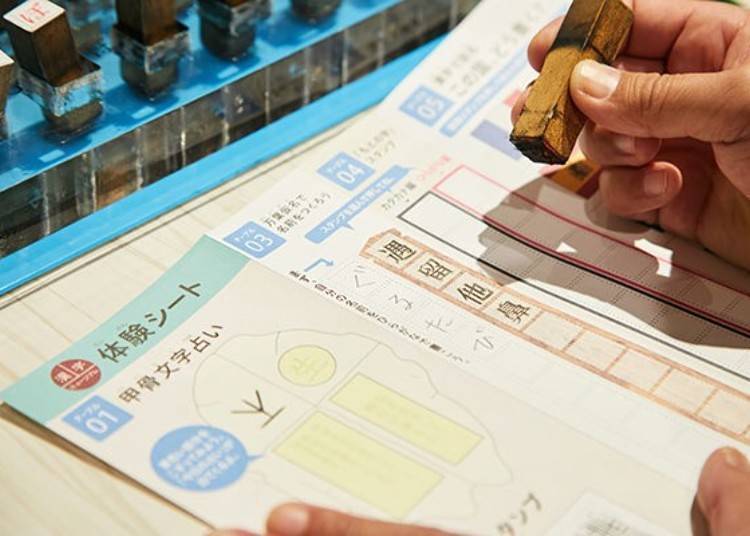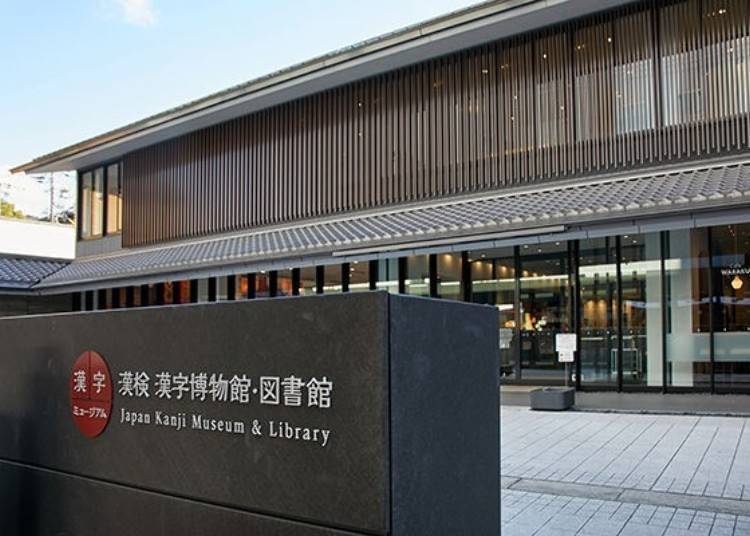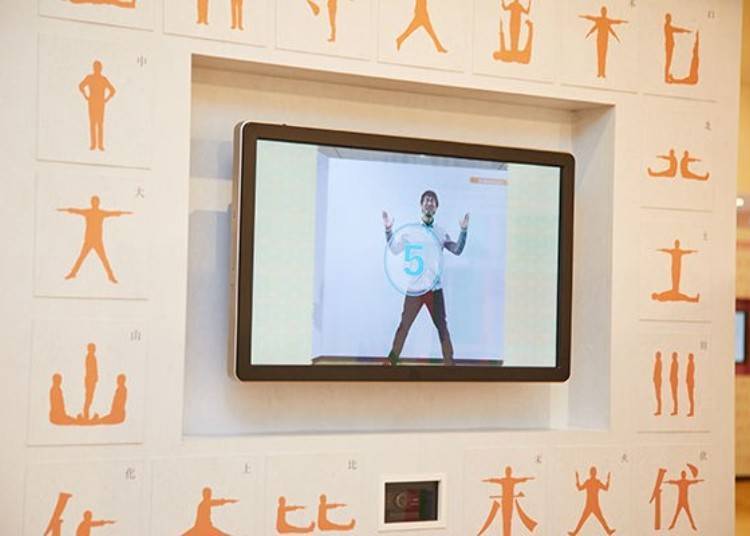
Japan is well known for its traditional culture, incredible food, and indecipherably difficult Kanji-based language. But Kyoto has found a way to make the characters accessible and fun for locals and tourists alike, with Gion’s “Japan Kanji Museum & Library”. You can experience the insane world of kanji in all three dimensions through images, graphics, and interactive exhibits. It has become particularly popular recently, so we decided to head over to experience some Kanji!

50,000 Characters! Experience the Deep World of Kanji with All Your Senses

Gion is located near Yasaka Shrine in Kyoto. The Kanji Museum opened up in 2016, along Shijo Street, the center of Kyoto Tourism.
In 2011 the “Kyoto Shiritsu Moto Yasaka Junior High School” closed, and the museum was established. The museum attracts many elementary and junior high school students from around the nation, and since its opening, it has attracted around 250,000 people.

The Kanji Museum is also a famous location where the “Kanji of the Year” is displayed after it is announced during the New Year’s Holiday. When we visited on December 14th, 2018, it was 2 days after the “Kanji of the Year” was announced. However it was still displayed at Kiyomizu Temple Main Hall until December 21st, and the museum still had the 2017 kanji “Kita(北)” on display.

When we first heard of Kanji Museum, we imagined an academic facility to study at, however its nothing like that. The 1st floor concept is “watch, listen and feel,” and the 2nd floor is “enjoyment of learning through playing” The museum offers ways to enjoy kanji with your body.
So let’s head in and follow the route from the 1st floor, and start our kanji experience.
1st Floor: Learn the Origin of Kanji and its History

First, we will stop by the theater near the entrance and watch an 8-minute movie.
The movie explains how kanji was imported and how the language and expression changed throughout history.

Next up is the “Kanji History Picture Scrolls” displayed on the wall. The scroll is 30m long!
With information on hieroglyphs and ancient letters, its length kind of makes sense. There’s a lot of information to take in, but their fun pictures and photographs make it easy to understand.

Here is the “Odoru Koukotsu Moji Table (Dancing Oracle Bone Script Table).
The oracle bone script is said to be the origin of Chinese Kanji and was used around 1,300 BC - 1,000 BC.
The large table, with turtle shells and animal bones motif, shows various kanji. If you touch the kanji, it moves towards bones and transforms into the oracle bone script it was based on.
It lets you see the base for what has formed the modern kanji.

Next up is a learning section where you use the experience sheet you received at the entrance.
First is the “Kokotsu Moji Uranai (Oracle Bone Fortune Telling).” As we explained, earlier everyone’s experience sheet is different. If you rub it with a metal bar, it will show you the modern versions of the oracle bone character, how it evolved and today’s fortune. Oracle bone characters were inscribed in turtle shells and animal bones, but it was also used in fortune-telling.

The “Gold Seal Stamp.” It is a replica of the King of Na Gold Seal that was discover in Fukushima Prefecture Shianoshima. The seal has “kan no wa no nanokokuo” inscribed on it. It reminds Japanese people of Jr. high school history class.

Manyogana is an ancient writing style that uses kanji to represent the Japanese language. On the experience sheet, there is a section to stamp your name with manyogana.
This time we wrote Gurutabi. What do you think? It definitely has a unique and stern look to it.
There are also “moto no ji” stamps for katakana and hiragana, and foreign country name stamps, which can all be stamped in the experience sheet.

There are various displays regarding kanji on the first floor. Here are some particularly impressive displays.
First is the “Dai Kan-Wa Jiten (Japanese kanji dictionary)” It has a total of 15 volumes (which 2 are indexes), and it has around 50,000 kanji gathered from various documents and dictionary from ancient to modern times. There is a total of 10,000 pages!

This machine in the “Writing Material and Tools Evolution” sections, is the first Japanese word processor in the world. The JW-10 word processor was created in 1978. It is a very rare machine, and there are only few left in Japan. As a side note the JW-10 is the same age as me.
As you can see it’s placed on a pretty big business desk and takes up some pace. Compared to the handheld devices we have now, it’s quite amazing how much technology has advanced in the past 40 years.

Once you are finished looking around the 1st floor, take the stairs or elevator and head to the 2nd floor, but before that.
This tower in the center of the museum is called the “50,000 Character Kanji Tower.” 50,000 characters listed in the Dai Kan-Wa Jiten are written on the four sides of the tower.

Blue kanji are what you learn in elementary school, and the orange color kanji are common kanji. Many people who visit here look for their name or find unique kanji that they have never seen, which sparks up a conversation between families and students.
2nd Floor, Game Like Activities to Learn Kanji

The 2nd floor is like a Kanji theme park, where the structure and features of kanji are like toys. Since you can play various kanji games, it feels like an arcade, and it is very popular with students.

There are many areas to experiences; here are a few that I thought were interesting.
The “Make Kanji with Your Body” section. Here you recreate a part of the kanji with your body, and it will take a picture. Some kanji will require more than one person, which creates a fun experience.
Btw the writer was trying to recreate the kanji for fire (火).


This is the “Kanji Kaiten Sushi (Kanji rotary sushi).” Different types of sushi are on a rotary, and once you select a dish, the kanji quiz starts.


If you get the answer correct, you get a point. After that the fish that was used in the question will swim back to the fish tank.


Finally, the “Kanji Radical Combination Touch Panel.” Here you select the part that matches the kanji radical to answer the question. (Kanji radical is the component that the character is listed. It is also the indicator of the meaning of the character)

The question in the picture uses the radical for “ito-hen.” When you combine the radical with the kanji “iro(色),” it turns into the kanji “zetsu(絶),” however when the kanji are separated, it is hard to make the correct combination. I made few mistakes too.
There are also various sections like learning kanji through idioms and learning how kanji transformed into their modern form from hieroglyphs. It will probably take more than an hour to go through each section. There are many things that you think you know, but you actually don’t.


After going through the museum, you can stop by “Cafe waraku” to take a break.
We recommend the matcha (S size, excluding tax 500 yen) or the iribancha (S size, excluding tax 450 yen) and looking at the people walking through shijo-dori.
Also, if you show your Kanji Museum entrance ticket, you can receive a 50 yen discount.

We learnt a lot on our trip to the Kanji Museum, and with their workshops on holidays and weekends, it’s a perfect place to truly experience the world of kanji, so makes the perfect place to stop on a trip to Kyoto.
-
Kanji Museum漢字ミュージアム
- Address 551 Gioncho Minamigawa, Higashiyama-ku, Kyoto-shi, Kyoto
- Phone Number 075-757-8686
Hours: 9:30 a.m. - 7:00 p.m. (Entrance until 4:30)
Closed: Monday (open if it is a holiday, closed on the next weekday), New Year’s Holiday *other temporary closure
Fee: Adult 800 yen, university and high school student 500 yen, elementary and junior high school student 300 yen (all include tax), preschooler and person with disabilities free
- Area
- Category
*Prices and options mentioned are subject to change.
*Unless stated otherwise, all prices include tax.
Popular Tours & Activitiess
Recommended places for you
-

Yodobashi Camera Multimedia Umeda Store
Shopping Malls
Umeda, Osaka Station, Kitashinchi
-
Goods

Yoshida Gennojo-Roho Kyoto Buddhist Altars
Gift Shops
Nijo Castle, Kyoto Imperial Palace
-

Kambei Sannomiyahonten
Yakiniku
Kobe, Sannomiya, Kitano
-

Jukuseiniku-to Namamottsuarera Nikubaru Italian Nikutaria Sannomiya
Izakaya
Kobe, Sannomiya, Kitano
-

ISHIDAYA Hanare
Yakiniku
Kobe, Sannomiya, Kitano
-

Kanzenkoshitsuyakinikutabehodai Gyugyu Paradise Sannomiya
Yakiniku
Kobe, Sannomiya, Kitano
-
Ad

Discover Timeless Beauty: Kimono-en, a Web Magazine Exploring the Spirit of Kimono
-
Ad

Experiencing Manga as Culture, Not Just Reading It: Expo 2025 with Rumiko Takahashi
-

New Way to Reach Koyasan! Ride Nankai's 'GRAN Tenku' for a Heavenly Journey
by: Guest Contributor
-
Ad

Recharge and Relax with a Healing Getaway at Kamenoi Hotel Toba
-

November Events in Kansai: Fun Festivals, Food, and Things to Do in Kyoto & Osaka
-

Best Things to Do and See Around Kyoto & Osaka in September: Events and Festivals in Kansai
Inspiration for Accommodations
-

Spacious Family Hotel in Namba: 20 Comfortable Stays for Family Fun
-

Charming Hotels to Enjoy the Spectacular Views of Arashiyama's Autumn Leaves from Your Room
-

Experience Stunning Views of Osaka Castle from Private Spaces: Top Hotels Near Osaka Castle
-

Recommended by Visitors! Arashiyama's Best-Rated Hotels
-

Family-Friendly Universal Studios Japan Hotel with Excellent Access
-

Enjoy a Comfortable Stay in Osaka! 10 Hotels with Convenient Airport Shuttle Services
-

Top 10 Recommended Hotels Near Namba Station with Great Access
-

Enjoy Night Views from Your Room! Recommended Hotels in Namba Area
-

Kiku-Masamune Sake Brewery Museum: See How Some of Japan's Best Sake is Made
-

Healthcare in Japan for Tourists: What to Do When You Get Sick or Injured in Japan
-

Sightseeing Highlights: Experience the Appeal of Kyoto Geisha Culture
-

Secrets to Shopping in Japan: Guide to Annual Sales in Japan & Where to Shop
by: Miyu Shimada
-

5 Must-Visit Nara Temples and Shrines: Discover the Timeless Beauty of Japan's Ancient Capital
by: WESTPLAN
-

10 Best Hotels Near Kyoto Station: Budget-friendly, Perfect for Kyoto Sightseeing
- #best gourmet Osaka
- #things to do Osaka
- #what to do in kyoto
- #what to bring to japan
- #best gourmet Kyoto
- #new years in Osaka
- #what to buy in nanba
- #Visiting Osaka
- #onsen tattoo friendly arima
- #daiso
- #Visiting Kyoto
- #best japanese soft drinks
- #japanese fashion culture
- #japanese convenience store snacks
- #japanese nail trends












